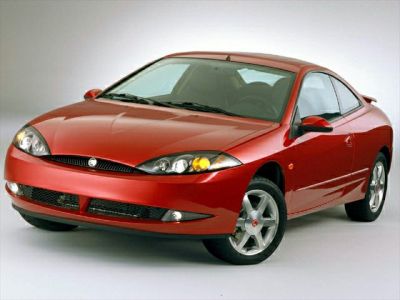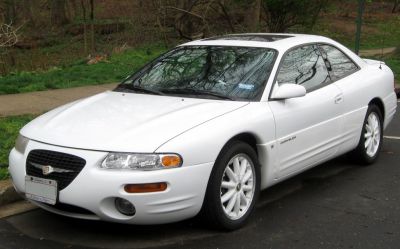 1965 Ford Shelby I Dimensions, Size & Specs
1965 Ford Shelby I Dimensions, Size & SpecsMeasurements of the 1965 Ford Shelby I, engineered for optimal performance and comfort
| Dimensions | |
|---|---|
| Length: | 4613-4740 mm181.6-186.6 in15.1-15.6 ft |
| Width: | 1732-1811 mm68.2-71.3 in5.7-5.9 ft |
| Width (Folded Mirrors): | 1306 mm51.4 in4.3 ft |
| Height: | 1300-1311 mm51.2-51.6 in4.3-4.3 ft |
| Weight Specifications | |
| Curb Weight: | 1165-1746 kg2568-3849 lbs |
The Ford Shelby I is a legendary coupe produced between 1965 and 1970, representing a prized chapter in American muscle car history. This generation of the Shelby I blends classic styling with competitive performance, making it a highly sought-after collector’s car today. The vehicle's length ranges from 4613 mm to 4740 mm (181.6 to 186.6 inches), showcasing a modest size that complements its sleek, aerodynamic profile. Width measurements vary between 1732 mm and 1811 mm (68.2 to 71.3 inches) with folded mirrors measuring a more compact 1306 mm (51.4 inches), emphasizing its streamlined design. Height is notably low, approximately 1300 to 1311 mm (51.2 to 51.6 inches), contributing to the car’s sporty stance and improved handling. The curb weight of the Shelby I ranges significantly from 1165 kg to 1746 kg (2568 to 3849 lbs), depending on the specific configuration and trim, reflecting the balance between lightweight agility and robust build quality. As a coupe-type vehicle, it was designed with performance fans in mind, favoring a compact, aggressive body style that remains recognizable and respected among muscle car enthusiasts. Overall, the Ford Shelby I coupe from the mid-1960s to early 1970s stands as a testament to the era’s automotive engineering accomplishments, combining compact dimensions with powerful performance capabilities.
Discover the standout features that make the 1965 Ford Shelby I a leader in its class
Have a question? Please check our knowledgebase first.
The Ford Shelby I coupe, produced from 1965 to 1970, has a length varying between 4613 mm and 4740 mm (approximately 181.5 to 186.6 inches). The variation depends on specific model year and any factory modifications during that range. This length situates the Shelby I comfortably within the typical size range of muscle car coupes of the 1960s, offering a balanced mix of road presence and maneuverability.
With folded side mirrors, the Ford Shelby I measures a width of 1306 mm (about 51.4 inches), significantly narrower than its overall width range of 1732 mm to 1811 mm (68.2 to 71.3 inches). This folded measurement is useful for tight parking spots or narrow garages, while the wider measurement includes mirrors extended in normal driving position, providing better visibility and road presence.
The height of the Ford Shelby I ranges from 1300 mm to 1311 mm (approximately 51.2 to 51.6 inches). This relatively low height contributes to the car's sporty and aerodynamic profile, helping reduce air resistance and lowering the center of gravity. The low stance improves handling and stability, enhancing the Shelby I's performance as a classic muscle coupe.
The Ford Shelby I’s curb weight ranges from 1165 kg to 1746 kg (around 2,567 to 3,849 pounds). Variations in weight result from different engine configurations, body specifications, and optional equipment over its production period. Generally, a lighter curb weight allows for quicker acceleration and nimble handling, which is a key factor in the Shelby’s reputation for performance and agility.
Yes, the Ford Shelby I is generally able to fit into a standard garage. With a length between 4613 mm and 4740 mm (approximately 15.1 to 15.5 feet) and a width no more than 1811 mm (about 5.9 feet) with mirrors extended, it fits within the typical single-car garage dimensions. However, its width with folded mirrors is significantly less, around 1306 mm (4.3 feet), which is helpful for maneuvering tight garage spaces safely.
The Ford Shelby I was built on a modified K-code Mustang basis but featured unique dimensions for enhanced performance. Compared to the standard Mustang models before it, the Shelby I is slightly longer and wider, reflecting its muscle car lineage. It offers a lower height and a sportier stance, optimizing aerodynamics and handling. The changes mark a clear step up in both size and aggressive design to distinguish it from its predecessors.
When compared to contemporaries like the Chevrolet Camaro or Dodge Challenger, the Ford Shelby I sits comfortably in terms of size. Its length of about 4.6 to 4.7 meters (15.1 to 15.5 feet) is comparable, but its relatively lower height of approximately 1.3 meters (4.3 feet) gives it a sleeker profile. Width-wise, it is competitive but slightly narrower than some heavier muscle cars, aiding maneuverability. This combination of size and weight helped cement its reputation as a nimble yet powerful classic.
The Ford Shelby I, being a coupe from the mid-1960s, typically accommodates up to four passengers. Interior space focuses on sportiness and driver engagement rather than spaciousness. While comfortable for front occupants, rear seating tends to be tight, typical of muscle cars of this era. Its compact exterior dimensions contribute to a cozy interior, emphasizing a fun-to-drive cockpit rather than family transport.
The primary goal behind the Ford Shelby I’s dimensions was to create a high-performance muscle car with balanced road presence, aerodynamics, and handling. The low height and moderate length helped reduce drag and lower the center of gravity, while its width offered stable cornering capabilities. This balance allowed the Shelby I to excel in speed and agility, making it a highly sought-after car for enthusiasts who valued performance combined with distinctive styling.
During its production period from 1965 to 1970, the Ford Shelby I saw some minor variations in dimensions, primarily due to changes in body styles, trim, and equipment. The range in length (4613 to 4740 mm), width (1732 to 1811 mm), and height (1300 to 1311 mm) reflect this evolution. However, foundational dimensions remained fairly consistent as the car maintained its core design ethos. These small adjustments typically improved performance, comfort, or styling without dramatically altering size.
Discover similar sized cars.

| Production: | 1971-1981 |
|---|---|
| Model Year: | 1971 |
| Length: | 4750 mm187.0 in |
| Width: | 1790 mm70.5 in |
| Height: | 1330 mm52.4 in |

| Production: | 1998-2002 |
|---|---|
| Model Year: | 1999 |
| Length: | 4700 mm185.0 in |
| Width: | 1770 mm69.7 in |
| Height: | 1320 mm52.0 in |

| Production: | 1995-2000 |
|---|---|
| Model Year: | 1995 |
| Length: | 4746 mm186.9 in |
| Width: | 1822 mm71.7 in |
| Height: | 1374 mm54.1 in |
